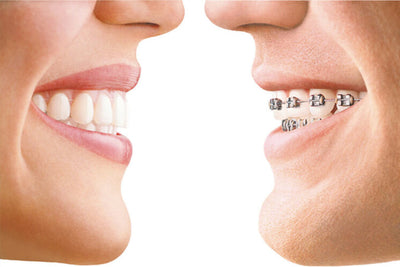So are there any of you that consistently use BT's on patients? If you already are very familiar with them this blog may not be too useful but I hope you enjoy it anyway. As always, comments are welcome!
At our office, BT is an alternate label for Bite Turbo. I'm not sure if that name is trademarked, so we've always just called them BT's.
BT's are additional amounts of bonding material we apply to selected areas to open the bite and guard against tooth bracket contact.
Here's the scoop:
Since I bond ALL TEETH, it's super important for us to limit broken brackets in order to, 1: reduce treatment time, 2: save chair time, 3: keep down emergencies, all resulting in 4: REDUCED overhead!
Although the obvious use is to guard against broken brackets, perhaps just as valuable (and possibly more so) is the desirable effects BT's can have on treating certain malocclusions. For example, if I have a 14yo patient with 100% overbite, I place BT's on the lingual of #8 and #9. If the laterals are lingually displaced (as in Class 2 Div 2) I'll place them lingual of #7 and #10.
By opening the bite, the occlusion and muscles of mastication are "disengaged" and extrusion of the premolars and molars occurs extremely fast. As you may know, this very thing has been accomplished with Bite plane (or bite plate) retainers for years, however, it's faster to apply and more predictable with BT's.
Alternatively, on a high-angle or open bite patient, I generously apply BT's to the lower 1st molars. This, of course, opens their bite even more, but the added bite pressure on the lower molars is an intrusive force and can help you with your bite closing mechanics.
Here a few things to remember when using BT's:
1. Don't forget about them! If you are using class II elastics BT's that are still hanging around can interfere with your class II A-P correction. Also, they look pretty silly on retainer models or in hygienist's chairs! Some practitioners use a different color adhesive so that it easily identifiable during treatment and at debond.
2. Be careful to use bonding adhesive which does not have too heavy of filler that it can wear down opposing enamel!
3. Inform the patient and parent, especially adult patients, that their back teeth aren't going to touch for the first part of their treatment! I make sure adults know this is going to significantly reduce their time in appliances (which it does), because it's definitely not a comfortable bite for them in the beginning.
One final thing on BT's. Several companies sell instruments to help form and apply BT's. Also, metal BT's (official "Bite Turbos") are available also. I've just found adding the adhesive myself is the easiest, most inexpensive way to go. I usually just use the extra adhesive flash from the brackets when I place them at the Full bonding appointment.
Well, that's it for BT's! Another critical element I use in my practice to increase efficiency and reduce overhead!
 CX PRO Membership
Get exclusive discounts, benefits, and personalised support from our team of experts with CX Pro Membership.
CX PRO Membership
Get exclusive discounts, benefits, and personalised support from our team of experts with CX Pro Membership.
⭐ Complimentary High Speed Handpiece with orders over $500
⭐ 10% discount on orders over $1000
⭐ 20% discount on orders over $5000
⭐ Free product samples upon request!
⭐ Early Access to our special Sales
⭐ Priority customer support
$275
9% off
$249
For a year
Terms & condition apply,
Learn More




